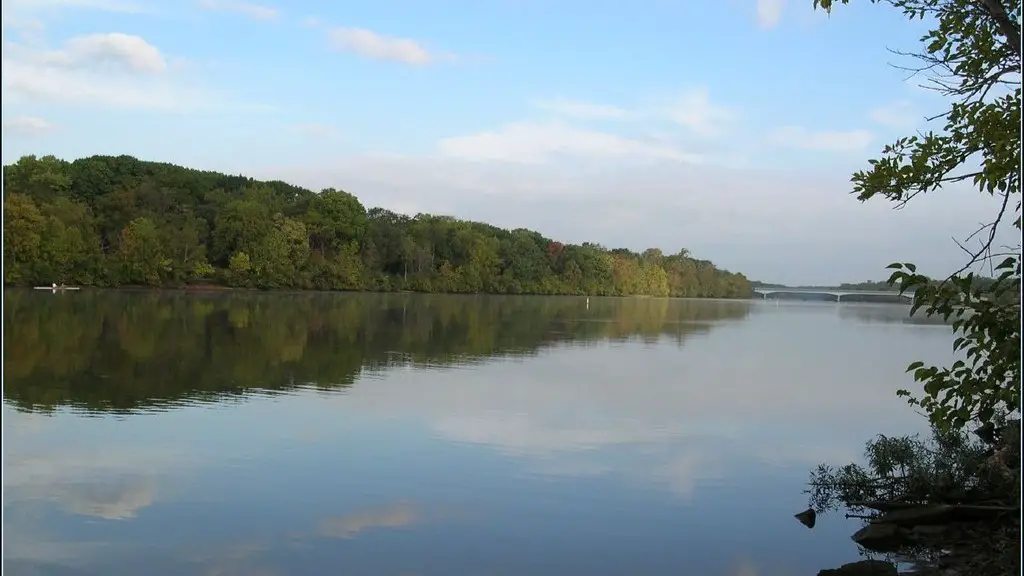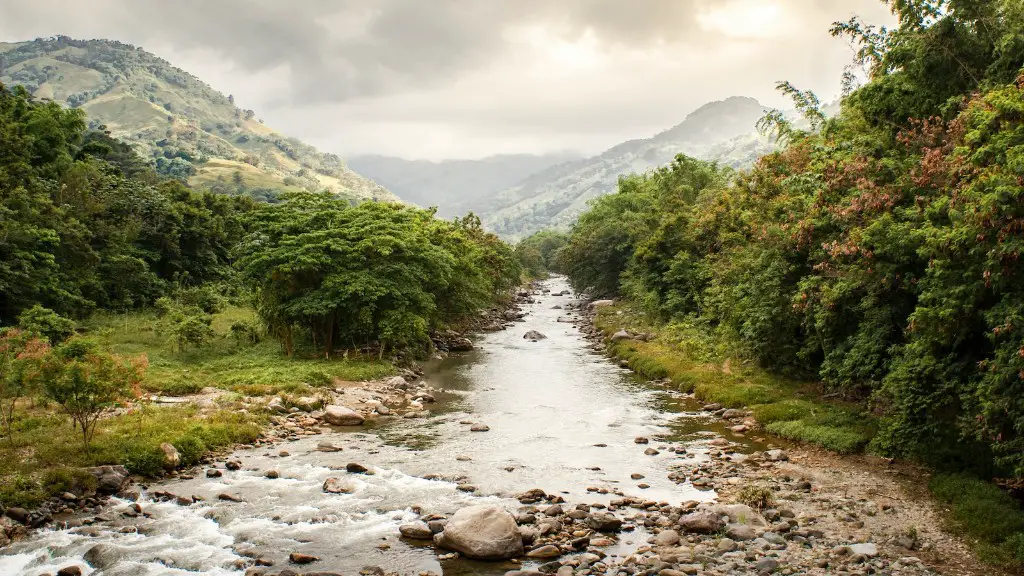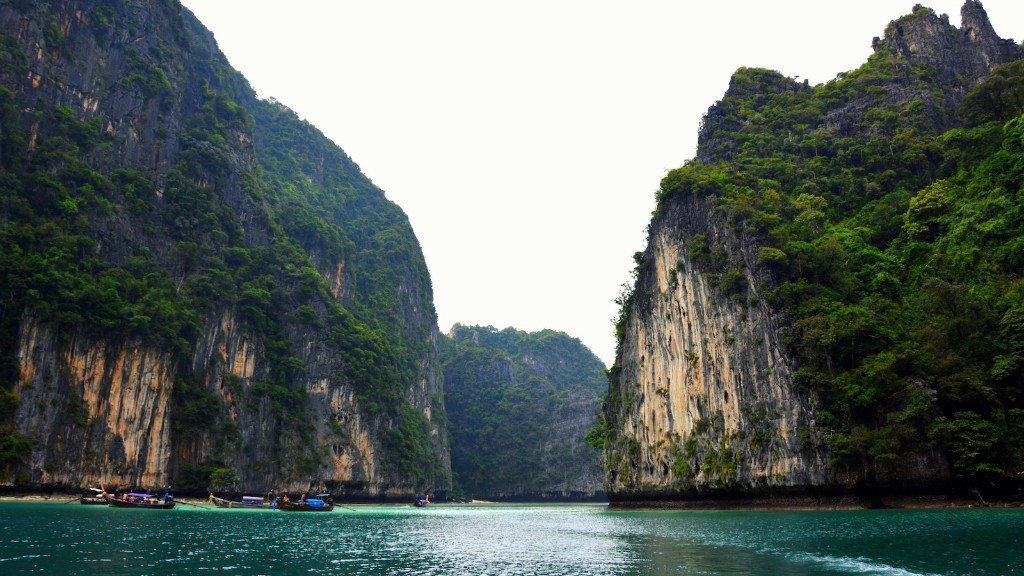Yangtze River floods are a common sight in the summer months of China. The river, the longest in China and third longest in the world, flows for about 6,300 kilometers and spans several provinces. The region experiences yearly flooding during the summer monsoon season, as heavy rains fill the river to capacity. Over the years, flooding has wreaked havoc with lives and property in the region. For centuries this natural phenomenon has posed significant threats to nearby population, so understanding the factors that trigger such floods and the damage caused is important.
What Triggers the Floods?
The main cause of flooding in the Yangtze River is excessive and heavy rainfall in the Yangtze Basin and the surrounding provinces. In recent years, the monsoon season in the region has been increasingly erratic with higher levels of rainfall resulting in more frequent and intense floods. Scientists cite climate change as one of the causes, since it causes fluctuations in temperature and rainfall in the region. Other factors include changes in land use, deforestation and urbanization, which leads to soil erosion, higher sediment rates, particularly in the upper reaches of the river, and an increase in runoff due to human activitiy.
The Impact of Flood
Flooding in the Yangtze River has devastating effects on the lives and property of people living in the basin. Over the years, the floods have caused massive destruction to crops, homes, businesses and infrastructure. In many cases, the floods have caused loss of life and displacement of people. In addition, the floods have led to water pollution caused by toxic chemicals and agricultural run-off, with devastating consequences for the environment and aquatic life.
The floods also have a direct impact on the lives and livelihoods of people living in the Yangtze River basin. Aside from destruction to property and homes, people suffer from disruption and displacement. Farms are destroyed while businesses are shut down. The floods also put a strain on public resources as local governments need to allocate funds to deal with the disaster.
The Chinese Government’s Response
The Chinese government has been proactive in responding to the flood situation. Over the years, they have undertaken several initiatives to try and reduce the damage caused by the floods. These initiatives include building dams, levees and dykes, strengthening public infrastructure, and relocating vulnerable populations. The government has also been working on protecting riverside forests to reduce soil erosion and increase vegetation cover, which helps absorb some of the flood waters.
The government has also invested in more efficient irrigation systems and improved communication networks to improve flood forecasting and early warning systems. This helps authorities to better prepare for times of flooding. In addition, the government is investing in better lives for locals, by providing flood insurance and support for farmers and other vulnerable populations.
Infrastructural Solutions
Several infrastructural solutions have been proposed to mitigate the effects of the floods. Projects have been undertaken to build enormous dams, levees and dykes, backed by engineering and extensive infrastructure projects. These projects are aimed at rechanneling water and keeping the floods in control.
The Three Gorges Dam, the largest dam in the world, is one of the most ambitious projects undertaken by the Chinese government. Completed in 2006, the dam stands 185 meters in height and is located at the end of the Yangtze River. The main purpose of the dam is to increase the efficiency of flood control, so that the river can more effectively regulate its own water levels.
In addition to the Three Gorges Dam, the Chinese government has built several other dams and levees along the Yangtze River, including the Danjiangkou Dam, Chinese-Russian Dam, Longtan Dam and Xiluodu Dam. All these projects are designed to help reduce the amount of flooding in low-lying areas, while also creating a more efficient and efficient water supply.
Challenges to the Solutions?
While the infrastructure projects aimed at controlling the floods in the Yangtze River are welcome, they are not without their share of criticism. Environmentalists fear that the Three Gorges Dam project and other such efforts in the region can have a detrimental effect on the local ecosystem, by disrupting the natural flow of the river and affecting the population of animals and aquatic species that depend on it. There are also concerns about the displacement of people due to the building of the projects, as many people are displaced due to the construction.
There have also been questions about the long-term effectiveness of the projects. The Three Gorges Dam project itself has proven to be quite effective in controlling floods and has reduced the damage from flooding over the past few years. However, many argue that the projects are expensive and largely focused on reducing the risk of flooding in the short term. Experts believe that these projects not only need to be better maintained but also need to be tailored to the natural evolution of the Yangtze River in order to be more effective in the long run.
The Role of Restoration Efforts
Many NGOs and organizations are actively involved in the restoration efforts to counteract the effects of floods in the Yangtze River. These efforts seek to restore the river’s natural habitats and ecosystems, as well as providing better protection to the riverbanks and its local population. Such efforts are fulfilled by helping improve existing infrastructure, restoring the natural vegetation along the river, and educating the local population about eco-friendly flood practices.
In addition to this, China is also looking to invest in new green technologies aimed at preventing floods, such as artificial wetlands and laser-based monitoring systems. There are also initiatives to use natural resources for flood control, such as the planting of coastal plant species that can absorb and disperse water and reduce the impact of flooding.
The Local and International Community’s Response
The local and international community has responded to the flooding situation in the Yangtze River with donations and aid. In recent years, aid organizations, foreign governments, and multilateral institutions such as the World Bank have provided financial assistance and high-tech equipment to the Chinese government to help them in their flood control efforts. In addition, many individuals have also provided donations to help rebuild homes and villages devastated by the floods.
The world is also responding to the floods by offering assistance and increasing awareness. International organizations such as the United Nations, Greenpeace, and the International Red Cross have been instrumental in raising awareness and helping to coordinate rescue and relief efforts. To this end, China is also actively involved in international conventions, such as the Paris Agreement, to address climate change and its effects on flooding.
The Way Forward
China is actively working to address the flooding situation in the Yangtze River. In light of the current situation, the government is focusing on a comprehensive, long-term plan to mitigate the damage caused by flooding. This includes investment in infrastructure projects to reduce flood risks and the effective management of resources, as well as the establishment of sustainable flood management practices in the democratic process.
On an international level, the Chinese government is actively engaging in dialogues to strengthen international efforts to reduce the risks of flooding. Through the Paris Agreement, the Chinese government is committed to promoting disaster risk reduction measures and fighting climate change. In addition, China has signed several agreements with other countries to promote an exchange of information and resources, such as economic and technical aid, to better prepare for floods.
Conclusion
Although floods in the Yangtze River are a seasonal phenomenon, the government and local communities are doing their best to prepare for any potential risks. Infrastructure projects, green technologies, and increased awareness are just some of the initiatives that have been undertaken to help reduce the damage and losses caused by floods. International collaboration is also becoming increasingly important to address the risks of flooding in the Yangtze River.




